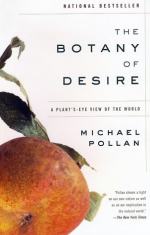
|
| Name: _________________________ | Period: ___________________ |
This quiz consists of 5 multiple choice and 5 short answer questions through Chapter 3.
Multiple Choice Questions
1. In Holland, between 1634 and 1637, there was a collective frenzy around flowers known as ________.
(a) Tulipmania.
(b) Carnationmania.
(c) Lilymania.
(d) Rosemania.
2. Pollan asserts that Jews and Christians discouraged devotion to flowers because it was a threat to _______.
(a) Monotheism.
(b) Polytheism.
(c) Tropism.
(d) Deism.
3. American hippies sometimes traveled the _______ in Afghanistan and returned with seeds of Cannabis Indica.
(a) The Hashish Trail.
(b) The Hemp Trail.
(c) The Indica Trail.
(d) The Bud Trail.
4. Clusius brought tulips with him to Leiden garden where they eventually ______ due to their rareness.
(a) Were given as gifts.
(b) Died.
(c) Were stolen.
(d) Were sold.
5. The book states that almost all cultures around the world love flowers with the notable exception of _______.
(a) Australia.
(b) Canada.
(c) Africa.
(d) Asia.
Short Answer Questions
1. The book suggests that gardens used to be planted as a kind of living _____ that cared little for aesthetics.
2. Goats are associated with the discovery of _____, when it was observed they became frisky after eating the red berries.
3. The early colonists to America in addition to bringing grafts also brought apple seeds to plant called ______.
4. The concept of the apple being a healthy and wholesome fruit was dreamed up to fight the negative image from ______.
5. ______ change the taste of plant flesh on the tongues of certain animals and can render the sweetest fruit sour.
|
This section contains 240 words (approx. 1 page at 300 words per page) |

|




